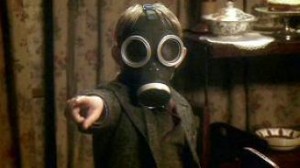 There I was, proudly ambivalent about events happening across the pond. Some royal something or other getting civil union-ed with some wealthy something something. Apparently this happening also involves some high-falutin’ muckity-muck. I had managed to avoid just about everything about this event, until my shields were ultimately breached by an unlikely saboteur. The scientific journal Cell bizarrely decided to dedicate this weeks issue to the royal wedding by publishing this bit of ad nauseum:
There I was, proudly ambivalent about events happening across the pond. Some royal something or other getting civil union-ed with some wealthy something something. Apparently this happening also involves some high-falutin’ muckity-muck. I had managed to avoid just about everything about this event, until my shields were ultimately breached by an unlikely saboteur. The scientific journal Cell bizarrely decided to dedicate this weeks issue to the royal wedding by publishing this bit of ad nauseum:
On Friday the 29th of April, 2011, England’s Prince William will marry the graceful and poised Miss Catherine Middleton in London’s hallowed Westminster Abbey. As the world tunes in to watch the “wedding of the century,” Cell Culture explores the more biological aspects of this historic union, including the neurocircuits that strengthen a marriage, the epigenetic changes that transform a “commoner” into a queen, and the search process for finding a high-affinity partner in a sea of weak interactions.
To which my immediate thought can best be expressed via the magic of Futurama:

Seeing as the last edifices of rationality have crumbled in the face of this monarchal matrimony, I guess I might as well join the fun. So, in the spirit of Cell, I’d like to tie this royal with cheese to my own research, and discuss the one thing that the Royal Family and Southerners have in common: inbreeding jokes.
Inbreeding is one of the major interactions that shape population structure. Populations are defined by the frequency and number of alleles they contain. A healthy, diverse population will have many alleles randomly distributed throughout. When populations decline, or selective forces reduce the number of available mates, individuals are forced to reproduce with close relatives. Because close relatives have many shared alleles, prolonged inbreeding will reduce the total available alleles in a population and fix loci for specific alleles. Once a loci is fixed, it becomes very difficult to change.
Inbreeding depression gets headlines and heartless jokes when it fixed loci are associated with deleterious alleles. Among the royal family, hemophilia is an oft used example of the deleterious effects of inbreeding. Polydactyly is common in some isolated Appalachian communities, among other places.
Inbreeding depression is not a universally negative phenomenon. To some extent, all humans, and most other organisms are inbred. Inbreeding depression retains favorable traits and in order to have a discrete population, some amount of inbreeding must occur. Populations can also suffer from outbreeding depression, where having a diverse pool of alleles can result in reduced fitness. By measuring the extent to which a population is inbred, we can determine many aspect of its demographic history and determine population structure. In fisheries, this allows us to determine stock structure and make management decisions and determine best practices.
Anyway, blah blah blah royal family, blah blah blah wedding. Enjoy it if you’re watching it, but you’re better off cracking open a Newcastle and queuing up an episode of Doctor Who.

Hey, Charles Darwin was a result of the inbreeding of the Darwin–Wedgwood family. Seriously take a look at their family tree on Wikipedia. It’s pretty scary — like what you’d think the yokels in “Deliverance” would have.
The gas mask kid still creeps the hell out of me.